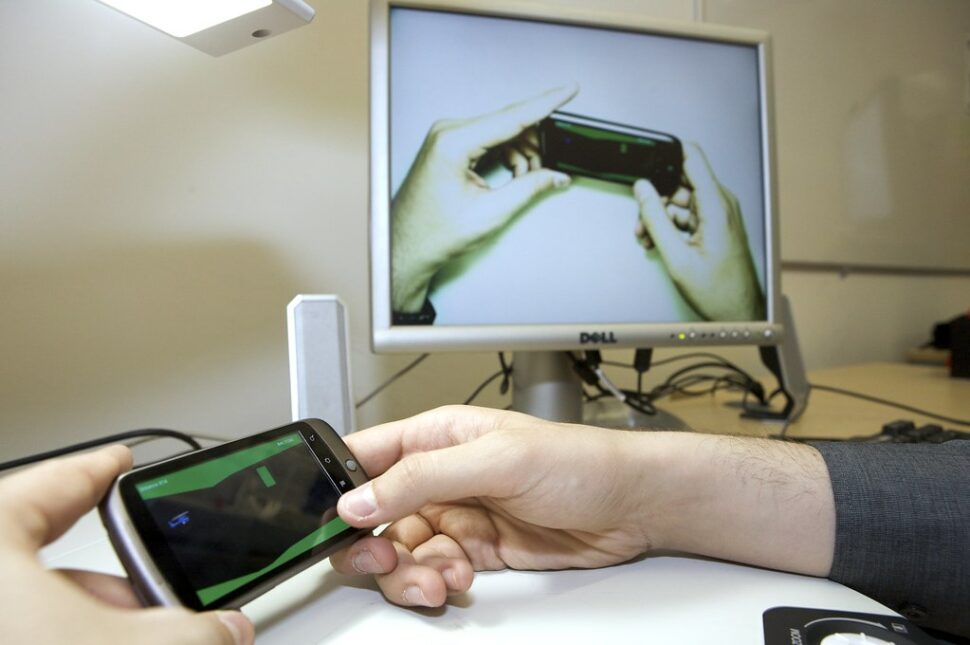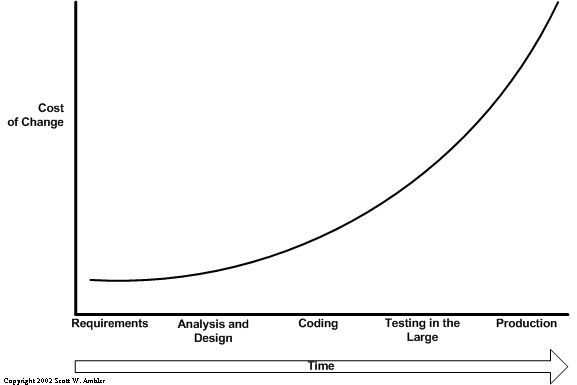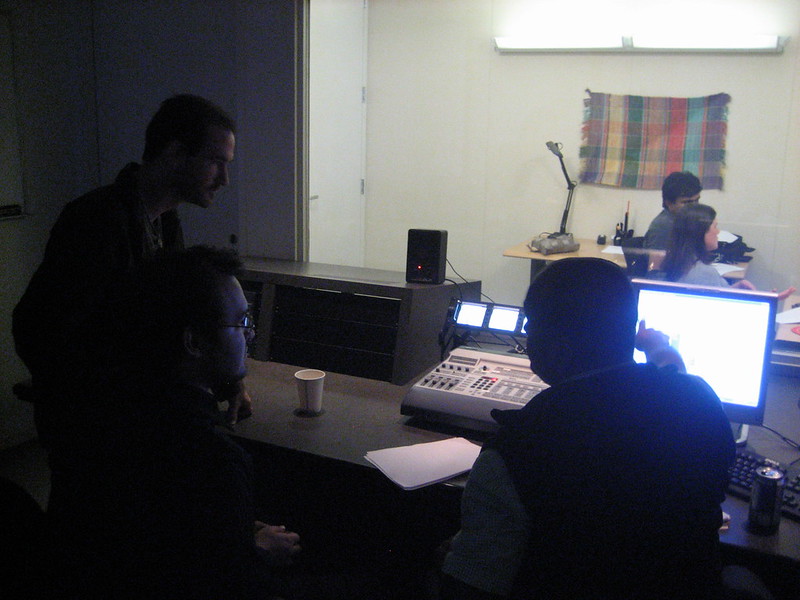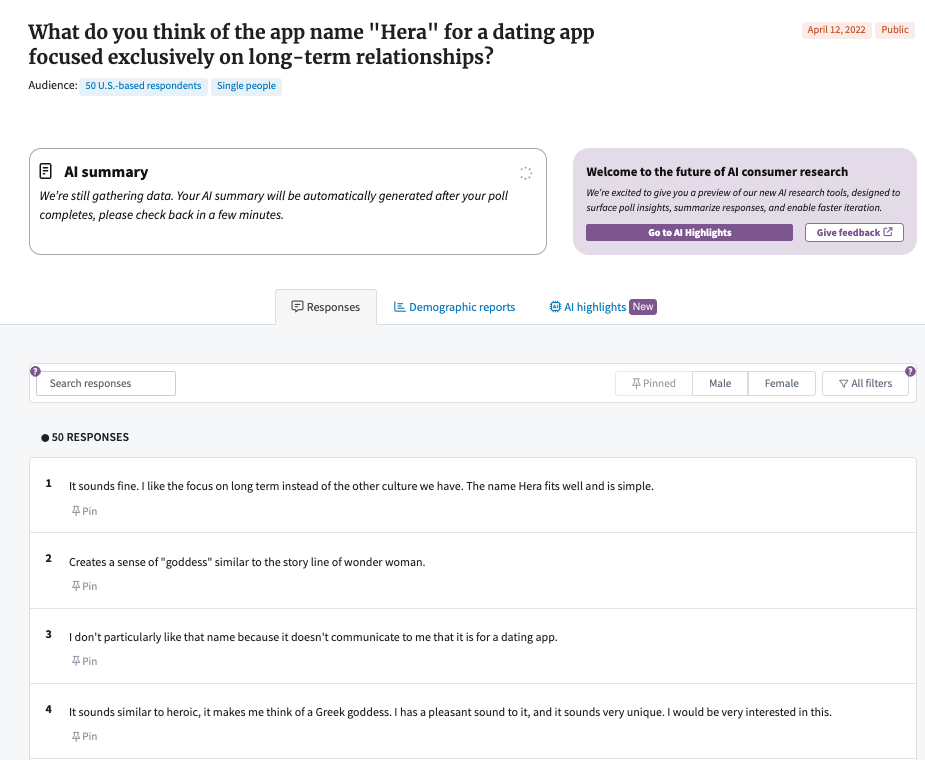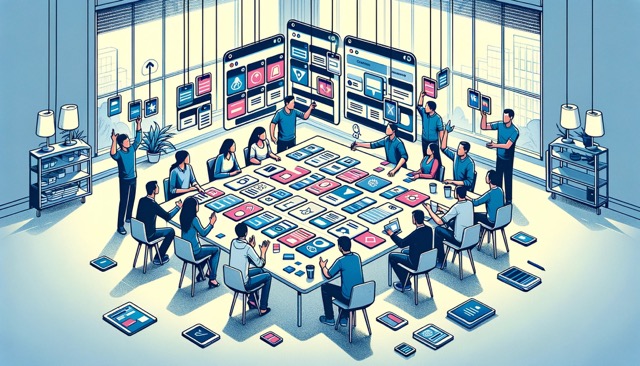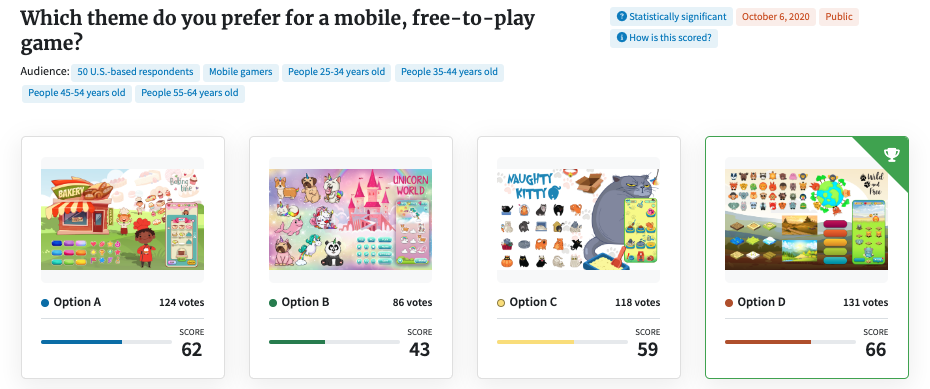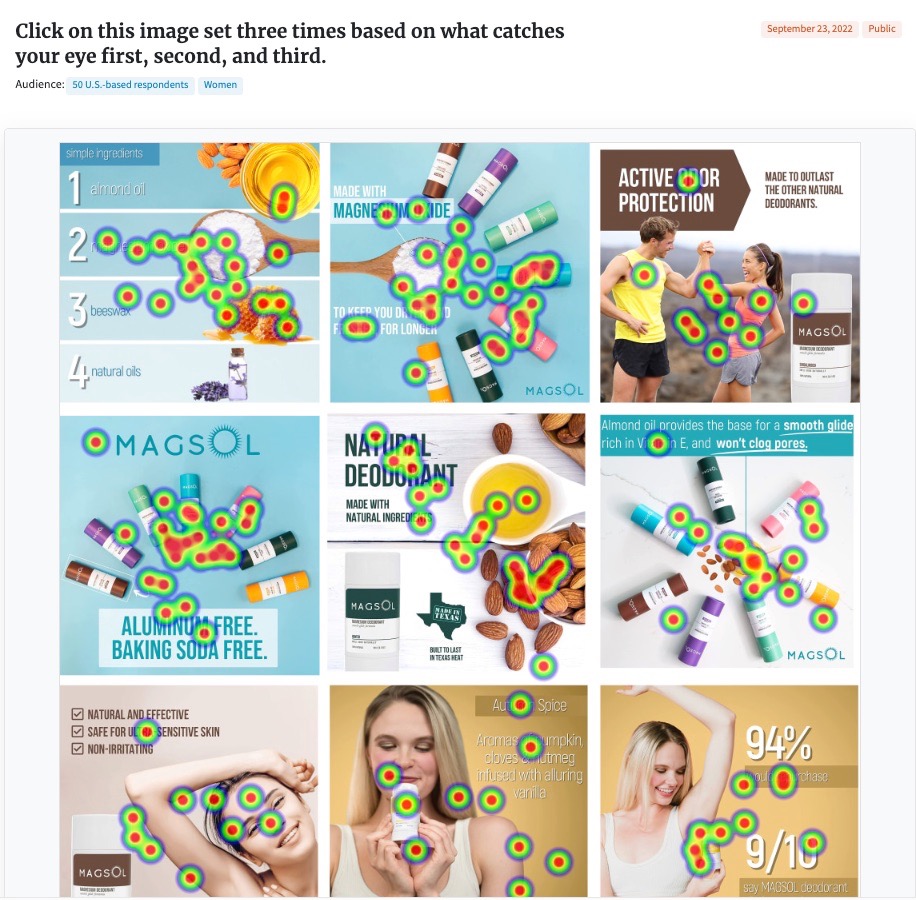But what is usability testing, why is it important, and how can you ensure you’re building an app or program that users love? We’ll dive into all that, plus seven different types of usability testing, in this blog. Let’s get started.
Usability testing is a core component of the app development process. It’s especially important for Software as a Service (SaaS) companies, whose users rely on their programs to help make work more efficient and effective.
What is usability testing
Image pulled from: https://www.flickr.com/photos/cinteractionlab/4557114137
Usability testing measures the quality of user experience (UX) in your software, including smartphone applications, desktop programs, and web-based tools. It helps you uncover bugs, verify that the design and layout works, and most importantly, make sure your users are happy with your product.
Why usability testing matters
It is far less expensive to keep an existing customer than to earn a new one. If your app is clunky, slow, or difficult to use, that can cause users to abandon it altogether. Frustration with the UX or functionality of an app is one of the main reasons users jump off, either to other products or simply off your program.
Good usability makes for stickier users and enhances customer satisfaction scores (CSATs).
Key components of usability testing
Jakob Neilsen is a UX and usability pioneer. He defines the following five main criteria that determine usability:
1. Learnability
Learnability refers to how intuitive your solution is. Can users understand it quickly and complete tasks the first time they use your app or product? Things that impact learnability include complexity and confusing designs.
2. Efficiency
Efficiency measures how quickly users can perform tasks in your solution. It is impacted by friction in your processes –for example, if a user needs to backtrack or reset a page before they move forward.
3. Memorability
If users leave your solution for a period of time, they should be able to reestablish their previous skill level quickly. This is what memorability measures. Memorability is easy in simple, intuitive systems with well-defined navigation and a clear layout.
4. Errors
How many errors do your users make while performing tasks in your program? It’s also important to measure how fast or easy it is to recover from those mistakes. Let’s say a user hits the wrong button – is it easy for them to go back to the previous step?
5. Satisfaction
Satisfaction is a more subjective measure that refers to how users respond to your design. If it’s easy, rewarding, and enjoyable to engage with, users are more likely to be satisfied with your solution. These criteria are sometimes referred to as “attitude” instead.
Different types of usability testing
The structure of usability testing usually falls under two categories.
Moderated vs. unmoderated testing
This is also referred to as guided vs. unguided usability testing. In moderated tests, you guide users through your solution, getting their feedback along the way. Unmoderated tests are more exploratory – users have free rein to assess your program on their own.
Moderated usability testing returns more controlled answers to direct questions, while unmoderated tests are more likely to deliver unexpected results.
Remote vs. in-person testing
Remote usability testing (testing done online) is often cheaper and easier to organize than in-person tests. You’ll also have access to a larger group of testers and respondents.
In-person usability testing is more time-consuming and expensive, and often has fewer recruit participants than remote tests. However, it can be a powerful testing tool – the increased access to your test participants provides more opportunities to dive deeper with follow-up questions.
You can also record these sessions to see exactly how people interact with your design. Test administrators will use everything from facial expressions to body language, coupled with participant responses, to help iterate on their designs.
With so many different elements to measure, it can be hard to select the right tools for testing your solution. Here are seven ways to conduct usability testing..
1. Session recording tests
Screenshot from Microsoft Clarity (Screen recording)
Screen recording tools make it possible to observe users without having to do in-person tests. You can create a guided test with questions or allow users to navigate freely throughout their experience.
Guided session recording tests might ask users to perform certain tasks and can even time them. This sort of quantitative data that you can track helps measure the impact of iterative changes to your app.
Microsoft Clarity is one of the more reliable session recording tools on the market and integrates with Google 360 as well as other analytics programs to help you assess usability.
Session recording tests are good for high-fidelity prototypes or even solutions that are already in-market, and are a great way to assess how effective your overall design is.
You can also pair session recording tests with eye-tracking tools that analyze where a user looks on a screen. Both session recordings and eye trackers provide heat map test results, which demonstrate where users look and click or tap most often.
Of the five categories of usability, session recording is best for assessing:
- Learnability
- Efficiency
- Errors
2. Lab testing
Image pulled from: https://www.flickr.com/photos/eekim/1819104307
You can get qualitative feedback on your design with lab testing. Lab testing is an in-person test in a laboratory. Sometimes it involves a one-way mirror so that the observers don’t disrupt the focus group members who are testing the products.
Lab testing is powerful because it gives developers access to users in person, enabling them to easily capture in-depth feedback on the app or program they’re testing.
As with any observed test, you can choose to make your lab test moderated or unmoderated, or even mix the two. You can also record the sessions to review later.
Lab testing is a solid method for measuring:
- Learnability
- Efficiency
- Errors
- Satisfaction
3. Guerilla testing
Guerilla tests involve randomly choosing people from public places and asking them to use your product with no prior knowledge. They’re a quick and effective alternative to lab tests. Like lab tests, you observe in-person testers and capture qualitative data from real people.
Guerilla tests are best for measuring:
- Learnability
- Errors
- Satisfaction
4. Card sorting
Card sorting is a useful explorative tool during the early stages of development. In this type of user testing, you ask people to sort cards into different groups or categories. You may also ask the testers to organize the cards into a set of steps or a user journey.
This offers a glimpse into how members of your target audience might navigate a program organically, which can help design the structure and architecture of your app. Usually, card sorting is done when there is a necessity for things like informational architecture (ex: website navigation or categorization of products in an e-commerce store).
- Card sorting tests are best used early in the process as they can help you develop efficiency and memorability.
5. Beta testing
Beta testing is the ultimate in unmoderated usability testing. Beta tests send your product out into the wild, usually to a select group of champions in your intended target market. These users get access to one of the first production versions of your solution and have free rein to explore your program in an open testing environment.
Beta tests are usually unmoderated and remote, but you can pair beta tests with session recording software to help you get more qualitative feedback.
Beta testing is a powerful tool because it helps assess all five characteristics of usability:
- Learnability
- Efficiency
- Memorability
- Errors
- Satisfaction
6. Testing usability with surveys
PickFu is a consumer insights platform where you run polls and surveys with your target audience. You can use PickFu for mock-up testing, prototype testing, and more to ask respondents for feedback on your ideas and designs.
The platform includes a built-in panel of 15 million verified users across more than 90 different demographic subsets. That means you can target specific ages, genders, income or education level, geographic locations, and even special interest groups and professions.
You can use polls and surveys throughout the development process, from validating your initial saas ideas to sharing final designs for feedback. Many people use polls to test the overall look and feel of their solution – for example, asking people which design they prefer, which navigation menu is clearer, or what questions they have about the solution in general.
You could use an Open-Ended poll to ask a specific question about your product. For example, “What is your opinion of this navigation bar?” or “What sort of things do you find difficult when you’re navigating this app/website/software program?”
You could also use Click Tests to gauge how easy it is for survey participants to find key features in your app. You might ask a group, “Where would you tap to access your account?” and check to see how frequently users hit the correct icon.
Head-to-Head polls let you break a tie between two designs, and Ranked polls let you show multiple navigation formats, designs, or layouts in front of a panel to help choose the best ones.
Every PickFu poll is supported by natural language processing AI technology that provides automatic summaries and reports of the survey responses. For example, in this sample poll, PickFu distilled 50 responses into an actionable summary:
“Participants expressed interest in products that are made with natural ingredients, often mentioning specific components like almond oil or beeswax as eye-catching elements. Additionally, informative images that provided details about the product’s ingredients, scents, or benefits were also frequently mentioned as attention-grabbing.”
Survey tests are useful for assessing:
- Satisfaction
- Learnability
7. Stress testing
Usability is not only a function of how users interact with your design. There are some non-human aspects of user experience that you can also test during development. These include the ways your servers or software related to load, and how reliable your program is. :
A stress test assesses how well your program or app performs under difficult conditions. Let’s say you experience high traffic or a poor connection. Tools like LoadForge help you simulate a high-stress environment to test your app in.
Stress testing affects how well your solution performs in terms of:
- Errors
- Satisfaction
Other components of usability testing
Differences between human audiences and individual participants can also impact usability. Researchers measure some of these impacts with the following methods:
Culture testing
Culture testing ensures that users across global markets have the same level of satisfaction as those in the country where your solution was developed. It looks at language barriers, cultural differences, and even the values of a society.
Here’s an example: in some countries, text is read right to left, not left to right. In those places, conventional navigation bars and layouts might not work. The best approach to culture testing is to recruit participants from the cultures you’re looking to launch your product in. (To talk about ourselves again, PickFu has audiences in seven countries – and growing – so you can easily test how consumers across the globe feel about your solution).
Accessibility tracking
Like culture testing, accessibility tracking makes it easier for more people to engage with your website, app, or software in a meaningful and satisfying way. It ensures that people with vision or hearing impairments or other disabilities can still use and navigate your solution. In some countries, having an accessible website and application is the law, so there’s a real business reason to ensure that your solution works for everyone. AccessiBe is an accessibility evaluation tool that helps websites stay compliant with various legislation.
Usability testing makes product development better
As we’ve covered, there is a wide range of usability testing methods you can employ throughout your design process. Each of these tests help verify different usability issues. Where, how, and when you use them is up to you – but it’s important that you test regularly during every iteration of your product.
If you do, you’ll have a suite of digital products that score high in user satisfaction, leading to a better product and return on investment.
Usability testing FAQs
What is the difference between a usability test and a focus group?
Usability testing focuses solely on how your solution works and its user experience (UX), while focus groups provide overall feedback about your idea or design. Focus groups can be used in UX research as well, but in general, their focus is more broad. Usability tests include a component of customer satisfaction and emotional response, but measured in terms of how they impact a user’s interaction with your product, not on the product as a whole.

